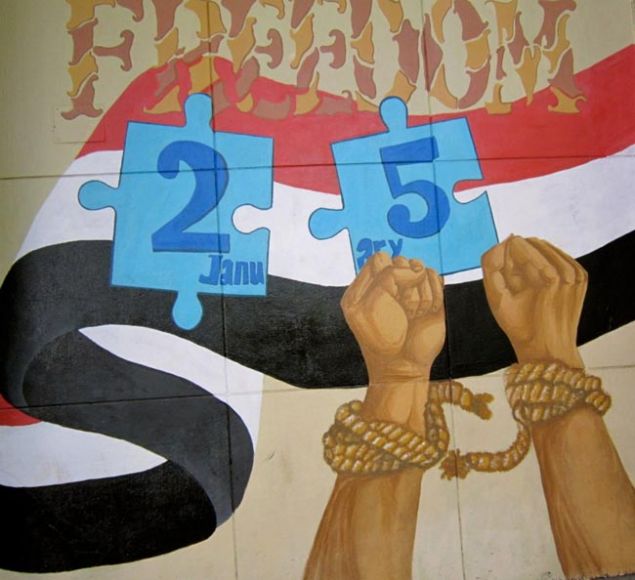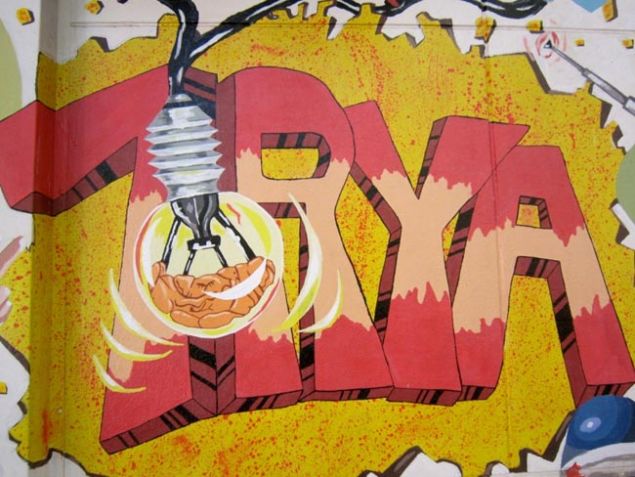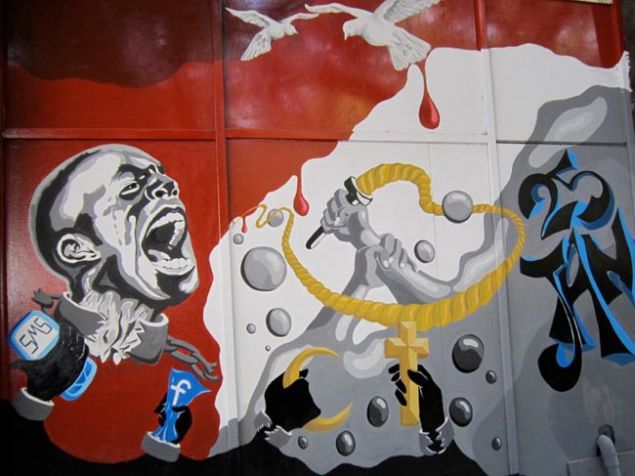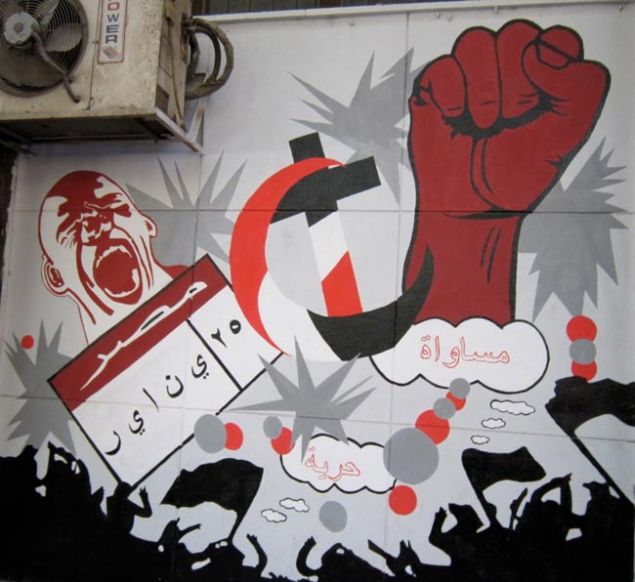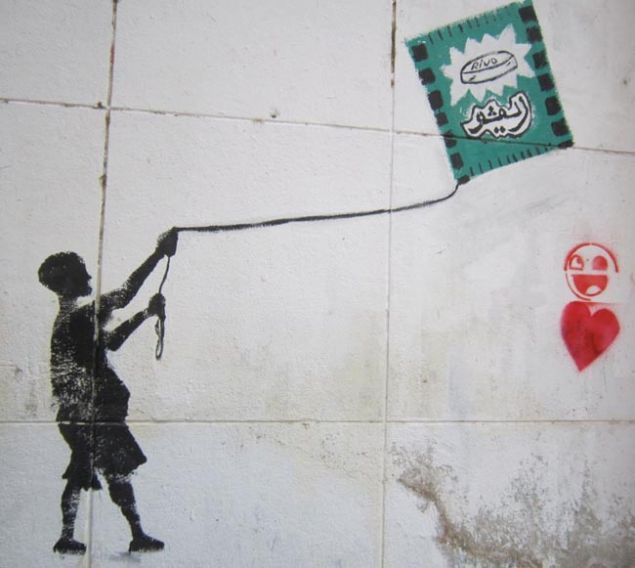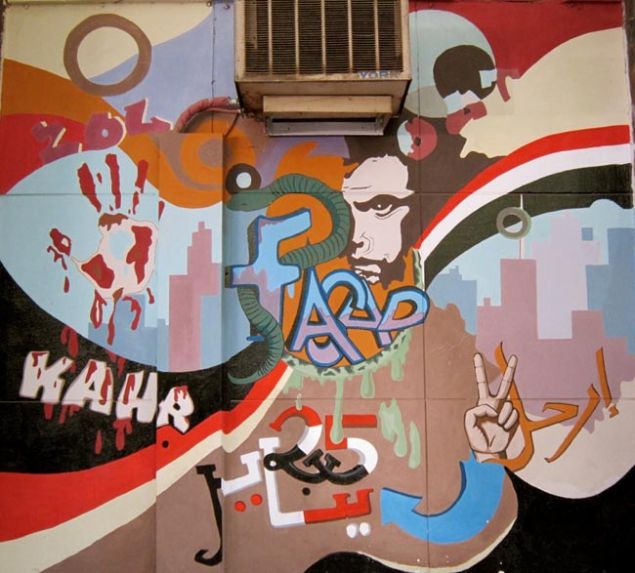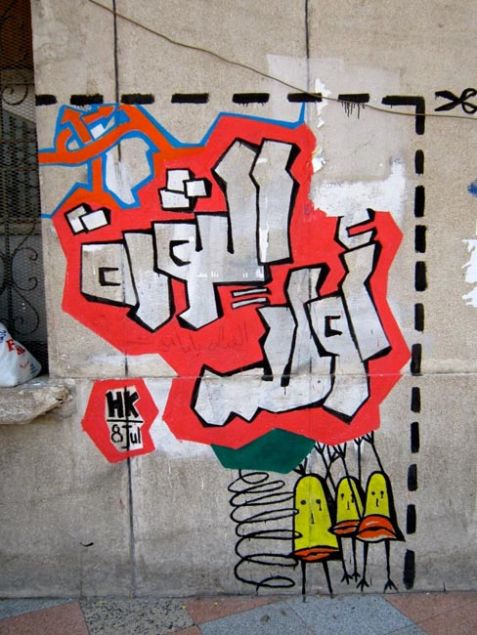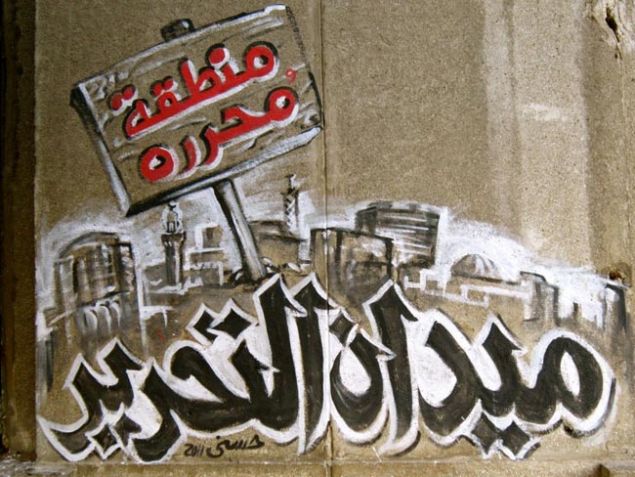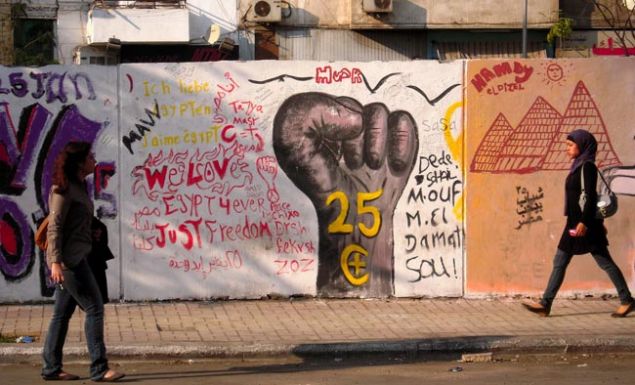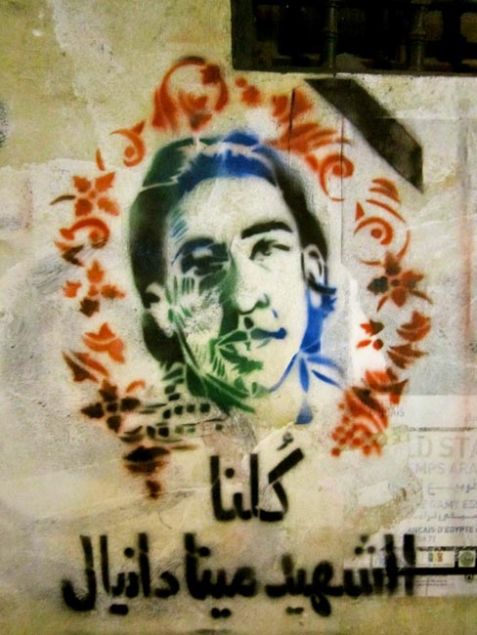A year after Egyptians launched a revolution in Tahrir Square on January 25th, 2011 and ousted former president Hosni Mubarak, graffiti immortalizing the uprising covered walls, buildings, and doors throughout the country. The graffiti evokes the repression of Mubarak’s rule and the celebrations following his ouster. But as repression and unrest continue throughout the region, paricularly in Syria, we are also reminded that the so-called Arab Spring is still very much history in the making.
Also check out our slideshow of photographs documenting Egypt’s year of revolution.
